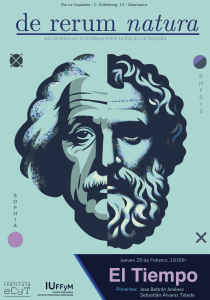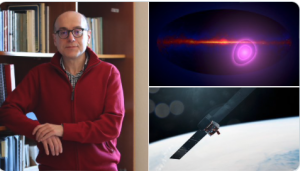Por décimo año consecutivo, las cuatro Universidades públicas de Castilla y León (las universidades de Burgos, León, Salamanca y Valladolid) organizan las Jornadas de Investigadoras de Castilla y León. El objetivo es fomentar la visibilidad y apoyar el trabajo de la mujer en el ámbito de la investigación.
Este evento, también se constituye en un foro de encuentro e intercambio de experiencias entre investigadoras y profesionales que desarrollan su actividad en las diferentes áreas STEM.

Las jornadas se celebrarán presencialmente en Valladolid, los días 18 y 19 de abril de 2024,y también se podrán seguir online, mediante retransmisión a través del Canal de YouTube del evento.
Por parte de la Universidad de Salamanca, el comité organizador local está formado por Susana Lagüela López Ana Belén Gil González (Dpto. de Informática y Automática, Facultad de Ciencias), Susana Lagüela López (Dpto. de Ingeniería Cartográfica y del Terreno, E. Politécnica Superior de Ávila) y Elena Pascual Corral (Dpto. de Física Aplicada, E. Politécnica Superior de Zamora).
Podrán presentar comunicaciones las investigadoras pre-doctorales y post-doctorales y alumnas que estén desarrollando trabajos de Fin de Máster o Fin de Grado en las siguientes áreas:
- Ingeniería y Arquitectura
- Informática y Telecomunicaciones.
- Física
- Química
- Medicina y Ciencias Biomédicas
- Ciencias de la Tierra y del Medioambiente
- Matemáticas, Estadística y Economía
Además, en esta edición se extiende la participación en las modalidades póster y flash a las estudiantes de los Bachilleratos de Excelencia de Ciencias de Valladolid que estén desarrollando un proyecto de investigación.
La asistencia a las Jornadas es gratuita y está abierta a cualquier persona interesada previa inscripción.
Todas las ponencias y pósteres serán recogidos en el Libro de resúmenes de las Jornadas, con ISBN.
Fecha clave:
- Plazo de envío de propuestas de comunicación: del 1 al 24 de marzo de 2024.
- Fecha de notificación de propuestas aceptadas/rechazadas: 8 de abril de 2024.
- Plazo de inscripción de asistencia al evento: del 1 de marzo al 14 de abril de 2024.
- Fechas de celebración: 18 y 19 de abril de 2024.
Tanto las personas que solo deseen asistir a las Jornadas como las investigadoras que vayan a presentar una comunicación, en cualquiera de las modalidades contempladas, deben formalizar su inscripción al evento.
Desde la Universidad de Salamanca, se facilitará el traslado de todos los asistentes con autobuses cada uno de los días de celebración.
Solicitudes e impresos
El plazo de envío de propuestas de comunicación finaliza el 24 de marzo de 2024 y todas las personas interesadas en asistir podrán inscribirse hasta el 14 de abril de 2024. Toda la información está disponible en la web de las Jornadas.











 Os anunciamos la próxima
Os anunciamos la próxima 


